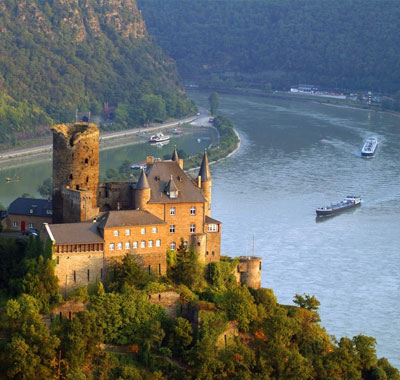Germany
Country statistics

Land area: 135,236 sq miles (350,261 sq km)
Total area: 137,847 sq miles (357,021 sq km)
Population (2012 est.): 81,305,856 (growth rate: -0.2%); birth rate: 8.33/1000; infant mortality rate: 3.51/1000; life expectancy: 80.19
Capital City: Berlin
Monetary unit: Euro (formerly Deutsche mark)
Languages: German
Ethnicity/race: German 91.5%, Turkish 2.4%, Italian 0.7%, Greek 0.4%, Polish 0.4%, other 4.6%
Religions: Protestant 34%, Roman Catholic 34%, Islam 3.7%, Unaffiliated or other 28.3%
Country introduction

Germany is one of the world's leading industrialised countries. Located in Central Europe, it is bordered to the north by the North Sea, Denmark, and the Baltic Sea, Poland and the Czech Republic in the east, Austria and Switzerland in the south, France in the south-west and Belgium, Luxembourg and the Netherlands in the west.
The northern third of the country lies in the North European Plain, that consists of flat terrain crossed by northward-flowing rivers (Elbe, Ems, Weser and Oder). Wetlands and marshy conditions are found close to the Dutch border and along the Frisian coast. Sandy Mecklenburg in the north-east has many glacier-formed lakes dating to the last glacial period. The Harz mountain range can also be found in the north.
Central Germany features rough and somewhat patternless hilly and mountainous countryside, some of it was formed by ancient volcanic activity. The Rhine valley cuts through the western part of this region. A section of the Rhine River runs through this valley, which is a main waterway for transporting goods from northern ports.
At the southern end of Germany are the Alps, the highest mountain range in Europe.
The culture

Germany's contributions to the world's cultural heritage are numerous, and the country is often known as the land of poets and thinkers. German literature can be traced back to the Middle Ages, in particular to such authors as Walther von der Vogelweide and Wolfram von Eschenbach, considered some of the most important poets of medieval Europe. The fairy tales by Jacob and Wilhelm Grimm are world famous and the Nibelungenlied, whose author is not known, is also a major contribution to German literature.
Germany is known as das Land der Dichter und Denker (The Land of Poets and Thinkers). Famous German poets include Johann Wolfgang von Goethe, Johann Christoph Friedrich von Schiller and Heinrich Heine. Poets in Jena and later in Berlin led Romanticism in the 19th century.
Many historical figures, though not citizens of Germany in the modern sense, were important and influential figures in German culture, such as Wolfgang Amadeus Mozart, Franz Kafka, Stefan Zweig and Nicolaus Copernicus. German was also spoken and written by, Ludwig van Beethoven, Sigmund Freud, Gustav Klimt and Albert Einstein, and numerous other great artists and scientists.
Attractions & landmarks

Germany has many small towns that still maintain their traditional culture and architecture. Many of these towns, and their buildings, date back hundreds of years.
Germany is well known for its precision workmanship. This is demonstrated in many ways, from its local architecture to the products and crafts available in local shops.
Architecture in Germany has been greatly influenced by the styles in architecture and art of European countries. These styles were born and developed during ancient period of Charlemagne's Empire to the modern history after the World War II.
Places worth visiting is the Cologne Cathedral, which is Germany's most visited landmark. The magnificent cathedral hovers above the roofs and chimneys of the city and is dominated by the Cathedral's gigantic pair of towers (the North Tower (157.38 m) is 7 cm higher than the South Tower) since their completion in 1880.
Also worth checking out is the Reichstag building in Berlin and the Hofbräuhaus in Munich. Other much visited architectural landmarks include the Drosselgasse in Rüdesheim, the medieval old towns of Rothenburg ob der Tauber, Monschau and Bad Münstereifel, the Brandenburg Gate in Berlin and the Holsten Gate in Lübeck.